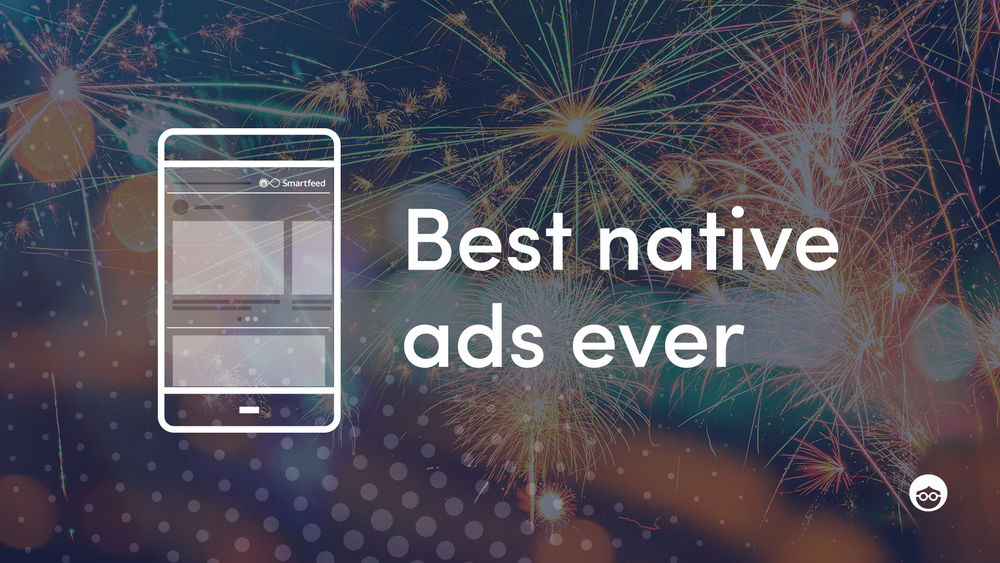
The basic premise behind an ad exchange is to make it easier for publishers to sell their unsold inventory to the highest bidder. Ad exchanges enable publishers to sell their inventory quickly to the highest bidders, increasing their inventory's value. Ad exchanges allow publishers to restrict who can sell their inventory and protect their brand against unwanted ads. A supply-side platform is the most common way publishers connect to ad platforms.
The process begins when the user enters a publisher's website or app. The server then sends the data to the Ad Exchange, which then sends a bid request to the DSPs. These DSPs examine the bid request to determine whether it is relevant to advertiser. DSPs then forward the request to buyers, who will bid based on various criteria, including location of advertising copy.

Ad exchanges make use of advanced technology to ensure that users have the best experience and security. They use a variety of tools to ensure the right ad is shown on the right website. After reviewing an advertisement, users can either approve or deny it. Many ad platforms are compatible with many browsers and devices. They also offer a full range of inventory. Advertisers can reach a broad audience and create engaging ads in any format.
Advertisers can connect with ad-exchanges to purchase and sell advertising inventory. Advertisers then use the exchanges for inventory purchases and profit-sharing. They connect thousands of advertisers and publishers to the digital advertising industry. A wide range of ad networks can connect to ad platforms and supply-side platform.
Although they serve similar purposes, ad networks and ad-exchanges operate in parallel. Both exchanges enable advertisers to buy and sell ads without needing to negotiate traditional media contracts. Publishers offer ad space in exchange for a share of unsold inventory. Ad exchanges also make the process of buying and selling ad inventory a transparent and efficient one. Publishers and advertisers will both benefit from a well-run Ad Exchange.

Ad exchanges can help advertisers and publishers find each other and increase the click-through rate of their digital advertising. Ad networks and an exchange can have different functions. Publishers can bid on each others' ad inventory using an auction. Ad exchanges enable advertisers to buy and sell ads without having to spend their advertising budgets.
An ad platform is a software platform that allows publishers to sell ad inventory, and allows advertisers to bidding on it. The prices are determined by Real time bidding, a programmatic technology that aims to deliver the best possible ad from all online advertising networks. The price of an advertisement on an exchange depends upon several factors like its size, location, frequency and use. This system allows brands and advertisers to respond to consumer demand more efficiently by delivering ads in the right context and relevant for the consumer.
FAQ
How much does it cost to advertise on social media?
It is important to know that advertising on social media platforms is not free if you decide to do this route. You'll be charged monthly according to how long you spend on each platform.
Facebook - $0.10 per 1000 impressions
Twitter - $0.20 Per 1,000 Impressions (if you tweet).
If you send invitations, Linkedin: $0.30 per 1,000 impressions
Instagram - $0.50 Per 1,000 Impressions
Snapchat - $0.60 per 1,000 impressions ($0.40 per user)
YouTube - $0.25 Per 1,000 Views
Tumblr - $0.15 per 1,000 impressions for text posts.
Pinterest - $0.05 per 1,000 impressions per month
Google + - $0.15 - $0.20 per 1 Million Impressions
Tumblr - $0.15- $0.20 per 100,000 impressions
Vimeo - $0.20 to $0.25 per 10,000 impressions
Soundcloud - $0.20-$0.25 per 1 million plays
StumbleUpon - $0.20 -$0.25 per 1 billion pageviews
Digg - $0.20 - $0.25 per 1000 diggs
Reddit – $0.20-$0.25 Per 1000 Comments
Wordpress - $0.20--$0.25 per 500 comments
Flickr - $0.20 -- $0.25 per 5,000 photo uploads
How can I choose my target audience
Start with yourself and those closest to your heart. Ask yourself "Who am I trying reach?" if you aren't sure where to start.
Ask yourself the following questions: Who are my industry's most influential people? What problems do they deal with daily? What are their top talents? Where can they be found online?
Go back to the beginning when you started your business. What motivated you to start your business? What problem did you solve for yourself, and how did you do it?
These answers will help you identify who your ideal clients are. This will allow you to learn more about your ideal customers and their motivations for buying from you.
Look at your competitors' sites and social media pages for clues as to who they cater.
Once you've identified your target customers, you'll need to decide which channel(s) to use to reach them. If your company offers services to real estate agents you might make a website that targets home buyers.
If your company provides software to small businesses, you might consider creating a blog for those owners.
You could also create a Facebook account for teens if you sell clothing. If you own a restaurant, you can set up a twitter account to provide information for parents searching for child-friendly options.
You have many options to convey your message.
What is an Ad Campaign?
An advertising campaign is a series of advertisements designed to promote a product or service. This could also include the entire production of these ads.
The term "ad" comes from the Latin word for "to sell." The first known use was by Marcus Terentius Varro (116-27 BC), who used it as a verb meaning "to make a sale."
Advertising campaigns are usually done by large companies and agencies. These campaigns may include many media types such as print, television, radio and the internet.
Advertising campaigns are typically long-lasting and have clear goals. One example is that some campaigns seek to create awareness while others are more focused on increasing sales.
Is it possible to get traffic for free?
Refers to traffic that comes from organic search results, without the need for advertising. This is also known as organic or natural traffic. There are many ways to get free traffic, such as article marketing, social media marketing, blogging, etc.
Article Marketing is one of the most popular methods of getting free traffic because articles have an extremely low cost per click (CPC). Paid ads are more expensive than the CPC. Article marketing is also called content marketing.
Social Media Marketing - Social media sites like Facebook, Twitter, and LinkedIn allow you to promote your business through advertising. These platforms allow you to share updates, photos, and establish relationships with potential customers. Many businesses pay to advertise on social media sites because they want to reach more people at a cheaper price.
Blogging - Blogging is another great way to generate free traffic. Quality content that is enjoyable to read will attract people. Once you're attracting visitors, you can monetize your blog by selling products or services.
Email Marketing – Although email marketing was around long before the internet, it's still one of most effective ways to drive website traffic. It is a great way to increase your subscriber base and sell products.
Why use social media for advertising your business?
Social Media Marketing allows you to reach customers right where they are, via social networks like Facebook, Twitter, LinkedIn and YouTube. You can also target certain groups on these networks with keywords.
Because this advertising method costs less online than traditional methods, it's more cost-effective. It allows you build strong relationships between your potential and existing clients.
It's easy to start using social media to promote your business. You only need a smartphone or computer and internet access.
What is an advertisement buyer?
Advertising space is purchased by an advertiser on TV, radio and printed media.
Advertisers pay only for the time their message is to appear.
They are not necessarily looking for the best ad but rather what is most effective at reaching their target market.
Advertisers might have certain demographic information about potential customers. This could include age, gender income level, marital status and occupation as well as hobbies, interests, and so on.
This data can be used by the advertiser to decide which media is most effective for them. They may decide that direct mail works better with older people.
Advertisers also look at the competition. Advertisers might place their ads near similar businesses if they see them.
Advertisers must also take into account the size of their budget as well as the time it will take to spend the money before it expires.
What should you know about radio advertising
Understanding how different media interact with each other is crucial. All media forms can be considered complementary, rather than competing.
Radio is best used to complement television advertising. Radio can complement TV advertising by reinforcing key messages, and providing additional information.
Radio listeners are often not able to handle long TV commercials. Radio ads are often shorter and cheaper.
Statistics
- Advertising spending as a share of GDP was about 2.9 percent. (en.wikipedia.org)
- In 1919 it was 2.5 percent of gross domestic product (GDP) in the US, and it averaged 2.2 percent of GDP between then and at least 2007, though it may have declined dramatically since the Great Recession. (en.wikipedia.org)
- It collects money from the advertisers, keeps 32% for its role in facilitating the process, and the remaining 68% goes to the publisher (you). (quicksprout.com)
- Google will display whichever ad type (CPM or CPC) is expected to earn more revenue for the publisher, which is in Google's best interest since they take a 32% share of the revenue. (quicksprout.com)
External Links
How To
How to display ads on your website
Advertisements are an important part of any business. They enable you to reach new customers and keep them coming again.
Ads also let you promote your products and services without spending money directly on advertising.
Google Adsense is a way to display image or text ads on your blog or website.
Google Adsense allows for you to earn revenue with each click of ad hyperlinks displayed on your website. It doesn't take any code to create your ads.
To get started, just sign up for a free account at www.google.com/adsense. Follow these steps to get started:
-
Use the Ad Builder tool to create your ads. You can create a variety of ads with the Ad Builder tool, including text ads, images, videos, and interactive ads.
-
Once you have created your ads you will need to upload them into your AdSense account. To do so, select "Upload", under the "My Ads section" link in the left navigation bar.
-
Next, add keywords relevant to your product or services to ensure that your ads are displayed in search results relevant your niche.
-
Finally, copy the ads you want to paste into the appropriate parts of your website. Once you have done this, your ads will be automatically loaded onto the site.
-
Clicking on an advertisement will take visitors to another page of your website, where they can shop for your products and/or services.
-
When someone clicks on an AdSense ad, earnings are transferred to your AdSense account.
-
You can view reports showing the performance of your ads by going to the My Account tab in the top right corner of your AdSense dashboard.
-
You can also download your earnings as a CSV file.
-
Changes to your ads or your target audience can help you increase your earnings.
-
Finally, you can pause or delete your ads at any time.
-
Contact us if you have any questions.